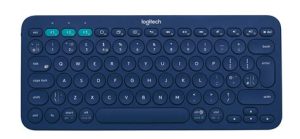
I am writing this blog on the K380, first made by Logitech in 2015 or so. C-Net did a review, basing their experience the way I am — writing this article using it.
Starting with the most visible features, it is predictably a small keyboard. You could feel cramped if you have large hands, but then you probably wouldn’t be making a practice of writing text into a smaller device, as I am doing with the K380 into an iPad. Despite this, the space is managed surprisingly well, and the keys are well-spaced for a keyboard this small.
I am also a fan of Logitech input devices, since all of my external mice and keyboards are made by Logitech. My two PC keyboards are solar-powered (available at a range of prices — no one should pay more than $80 for it), the only ones I can find like it. I liked the concept, and they have been serving me well on my two desktop computers for several years.
I also own a small “Keys-to-go” keyboard which works nicely with my android. But with my iPad, it didn’t work so well. The k380’s behaviour on the iPad is quirky in comparison — sometimes the output would freeze, and sometimes it would be quite responsive. It was surprising that I was able to connect to the keyboard without a pairing code.
I tried the k380 on my Motorola Moto 3G cellphone, and while it recognizes it and offers a pairing code, I could not get my K380 to connect. At least, I couldn’t until I found a way to do a kind of hard reboot of my Android. I pressed the power and “up” volume buttons at the same time for a few seconds while it was shut off. This is nearly the same keypress combo as for a factory reset. I was able to avoid a factory reset, and I still have my apps, music and personal info. But be it known that an ordinary power off/power on reboot didn’t work.
Outside of that, I liked the feel of the keys, and its quiet sound.
Views: 117
